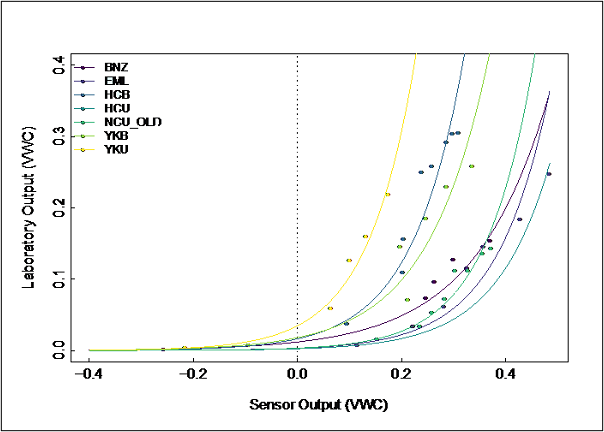The ORNL DAAC recently released a new Arctic-Boreal Vulnerability Experiment (ABoVE) dataset by Minions, C., et al. (2021):
ABoVE: Soil Temperature and VWC at Unburned and Burned Sites Across Alaska, 2016-2020
This dataset provides soil temperature and volumetric water content (VWC) measurements at 15 cm depth collected at 12 selected boreal and tundra sites located across Alaska. Each site is equipped with a HOBO MicroStation Data Logger that hosts two soil temperature sensors (HOBO S-TMB-M006 Temperature Smart Sensor), and two soil moisture sensors (HOBO S-SMD-M005 10HS Soil Moisture Smart Sensor). Each sensor was installed horizontally at a depth of 15 cm within the soil profile. Samples of soil from seven sites were taken to a laboratory for determination of site-specific soil moisture sensor calibration curves to correct raw measurements. Data were nominally recorded at an hourly frequency and downloaded from the sites at least annually for the period 2016-08-11 to 2020-05-09 but data coverage varies by site. These measurements were collected at the same sites as previously archived CO2 efflux and thaw depth data.
The ABoVE is a NASA Terrestrial Ecology Program field campaign being conducted in Alaska and western Canada, for 8 to 10 years, starting in 2015. Research for ABoVE links field-based, process-level studies with geospatial data products derived from airborne and satellite sensors, providing a foundation for improving the analysis, and modeling capabilities needed to understand and predict ecosystem responses to, and societal implications of, climate change in the Arctic and Boreal regions.
Additional data from ABoVE and other relevant links can be found on the ORNL DAAC's ABoVE Project Page.
Citation: Minions, C., S. Natali, J.D. Watts, and S. Ludwig. 2021. ABoVE: Soil Temperature and VWC at Unburned and Burned Sites Across Alaska, 2016-2020. ORNL DAAC, Oak Ridge, Tennessee, USA. https://doi.org/10.3334/ORNLDAAC/1869

